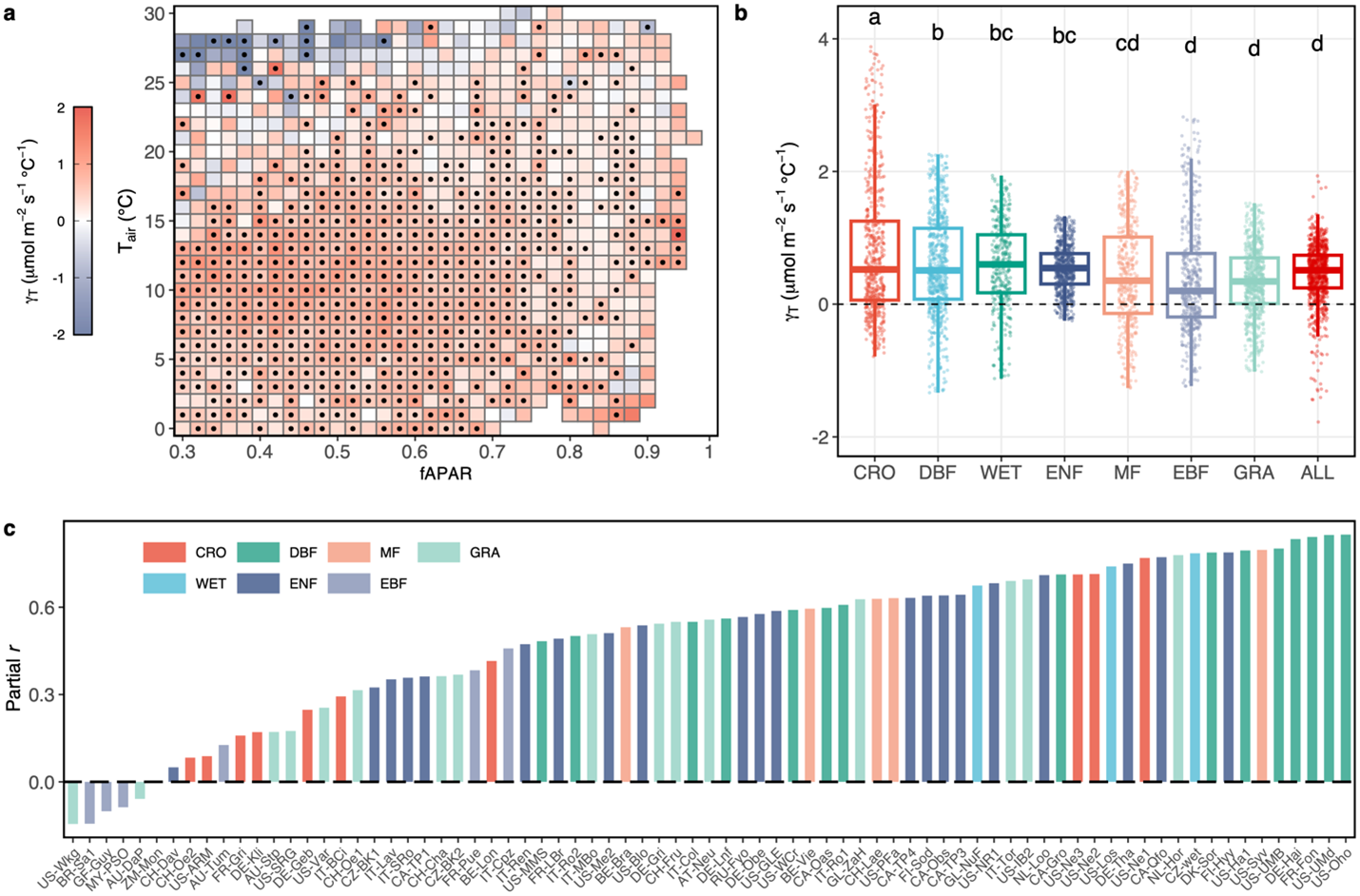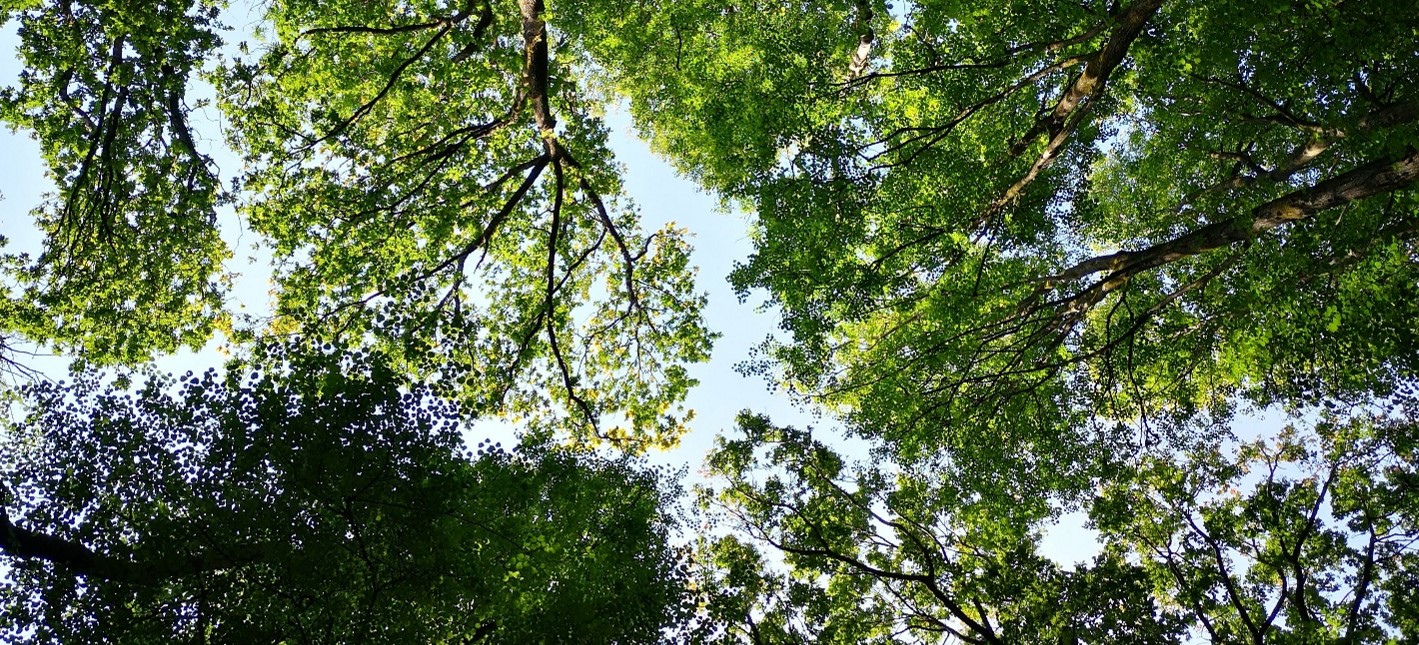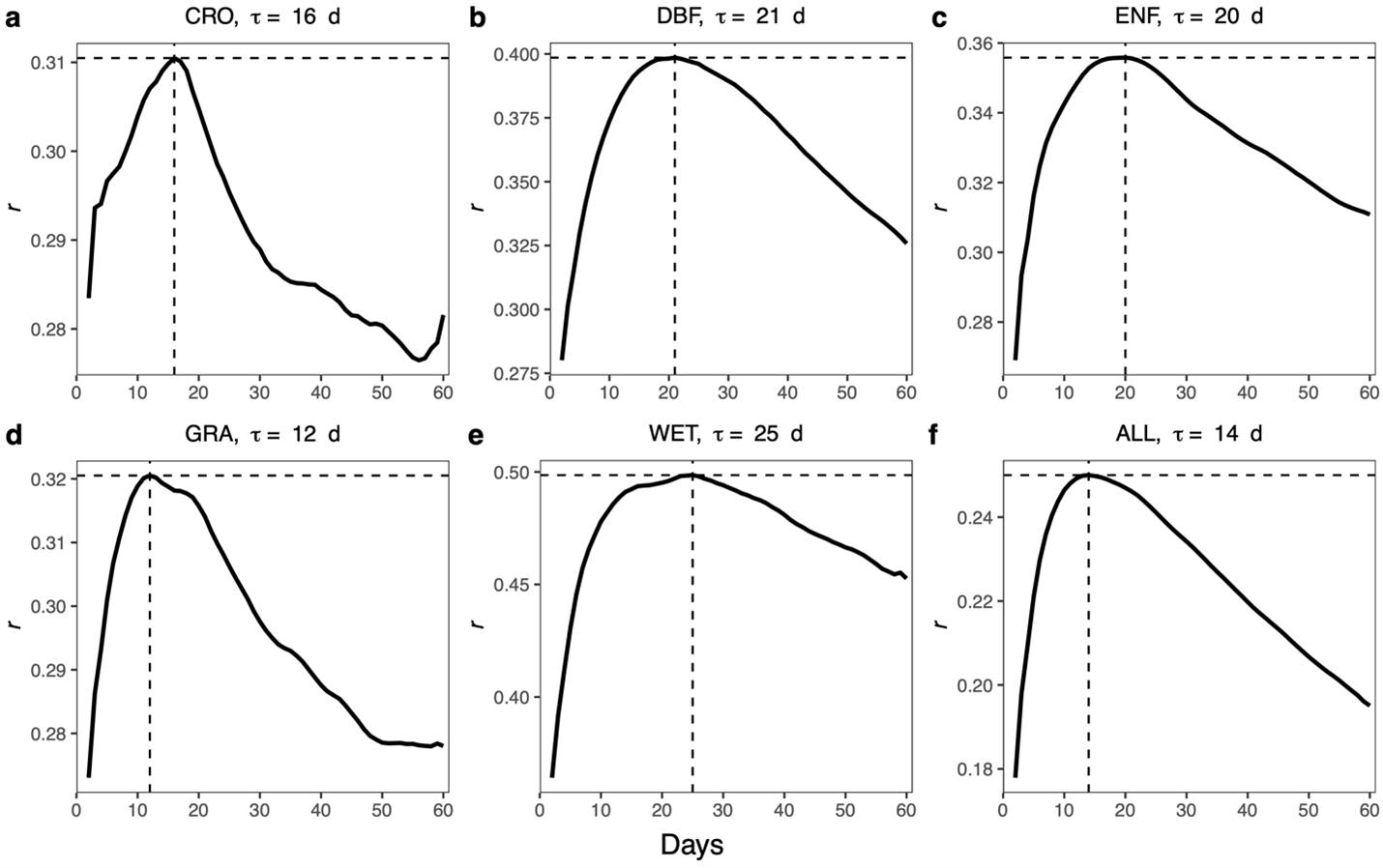A new study published in Nature Plants led by LEMONTREE’s Jiangong Liu from Seoul National University, “Evidence for Widespread Thermal Acclimation of Canopy Photosynthesis,” reveals groundbreaking insights into how plants adapt to temperature changes over time at the canopy scale.
Recent research has uncovered that plants adjust their photosynthetic capabilities over weeks to months, a process known as thermal acclimation. While previous studies have primarily focused on individual leaves, this new study shifts the focus to the whole canopy, providing a broader perspective. Using data from more than 200 eddy covariance sites across the globe, the researchers show that canopy photosynthesis responds to increasing temperatures by boosting maximum photosynthetic rates (Amax), especially when water availability is not a limiting factor.
By pinpointing a 14-day period as the key timeframe for plants to acclimate, the study highlights how different ecosystems, from croplands to grasslands, vary in their thermal acclimation responses. Croplands exhibit the quickest acclimation, while grasslands have slower rates. This discovery offers vital information for refining models that predict plant responses to climate change and emphasises the importance of understanding photosynthesis at the larger, canopy scale.
Understanding Thermal Acclimation of Canopy Photosynthesis
The ability of ecosystems to absorb carbon through photosynthesis varies significantly across different regions and seasons, and one of the biggest drivers of this variation is air temperature. While scientists have long studied the immediate impacts of temperature on photosynthesis, the slower process of thermal acclimation, where plants adjust to sustained temperature increases, has received less attention. This process is increasingly relevant as global temperatures continue to rise.
Thermal acclimation involves biochemical changes in plants, such as adjustments to electron transport and carboxylation, as well as how stomata respond to atmospheric conditions. Previous research primarily examined individual leaves, but this study explores how entire plant canopies—comprising many leaves—adapt to increasing temperatures. It specifically focuses on whether the maximum rate of photosynthesis under high light conditions (Amax) can adjust to higher average temperatures over time.
By using data from the extensive FLUXNET2015 network of eddy covariance sites, this study measures canopy-scale photosynthetic rates across a wide range of ecosystems. Jiangong and the team aimed to identify the specific window of time in which canopy-level photosynthesis acclimates to temperature changes and to assess how well current models of photosynthesis capture these acclimation processes. Incorporating recent advances in understanding temperature dependence and leaf physiology, this research significantly enhances the understanding of ecosystem-wide thermal acclimation.
Evidence for Thermal Acclimation of Canopy Photosynthesis
The study provides evidence that canopy photosynthesis thermally acclimates, showing a strong positive correlation between Amax and growth temperature, particularly when water is sufficiently available. By carefully controlling for variables such as temperature and canopy foliage quantity, the researchers found that 87% of the data bins used for analysis showed positive thermal acclimation rates, with 65% of these being statistically significant.
Figure. 1: Relationships between Amax,2000 and . a, values over fAPAR and Tair bins across flux sites.
This acclimation response was observed across various ecosystems, with croplands displaying the highest acclimation rates and grasslands the lowest. Even when accounting for other environmental factors such as light levels and vapour pressure deficit, the acclimation signal remained strong.
One interesting finding was that ecosystems with more stable thermal environments, like tropical evergreen forests, showed reduced acclimation capacity. This suggests that plants in these regions may have limited ability to adjust their photosynthesis to changing temperatures. Nevertheless, the overall results strongly indicate that thermal acclimation is a widespread mechanism, helping plants increase their carbon carboxylation potential under a warming future.
The Time Scale of Thermal Acclimation
One of the key aspects of the study was determining the time scale (τ) for canopy photosynthesis to acclimate to changes in growth temperature. The researchers found that this time scale varied across different plant functional types (PFTs). For example, grasslands and croplands showed the shortest acclimation periods (12 and 16 days, respectively), while evergreen needle-leaf forests, deciduous broadleaf forests, and wetlands required longer periods, up to 25 days. On average, across all ecosystems, the acclimation period was about 14 days.
Interestingly, evergreen broadleaf forests did not show a clear acclimation time when measured by photosynthetic capacity. However, using remote-sensing data, the researchers estimated an acclimation time of around 13 days. The length of these acclimation periods reflects a balance between the benefits of increasing carbon uptake and the resource costs of making the necessary physiological adjustments.
The findings underscore the importance of considering PFT-specific acclimation times when improving models of plant responses to climate change. Fast-growing ecosystems like croplands and grasslands may adjust more quickly, while slower-growing ecosystems like forests and wetlands might take longer but potentially reap greater benefits from acclimation over time.
Figure. 2: Time scales (t) for thermal acclimation of canopy photosynthesis. The time scale for (a) croplands (CRO), (b) deciduous broadleaf forests (DBF), (c) evergreen needle-leaf forests (ENF), (d) grasslands (GRA), (e) wetlands (WET), and (f) across all available sites (ALL). The x-axes represent the number of days over which Tair is averaged to derive . The y-axes represent the 5-day moving average of positive Pearson correlation coefficients (r) between Amax,2000 and over fAPAR and Tair bins. The t value is the length of time frame for which r peaks.
Future Implications: Thermal Acclimation and Climate Change
This study has major implications for predicting how ecosystems will respond to future warming. The thermal acclimation ability of canopy photosynthesis suggests that plants could increase their carbon uptake potential in response to rising temperatures when water is not a limiting factor. However, as climate change also brings greater variability in water availability, plants in many regions may need to reduce their photosynthetic capacity to conserve water, especially during periods of drought.
Accurately representing this acclimation process in land surface models is essential for forecasting ecosystem responses to global warming. Incorporating seasonal acclimation of key photosynthetic processes—like the maximum carboxylation and electron transport rates—will improve the accuracy of models simulating plant responses to temperature changes on weekly to monthly timescales.
As water availability becomes an increasingly important limiting factor, especially in warmer growing seasons, understanding canopy-scale thermal acclimation in the context of both temperature and water availability will be crucial for predicting future ecosystem behaviour.
Read the Full Paper:
Liu, J., Ryu, Y., Luo, X., Dechant, B., Stocker, B.D., Keenan, T.F., Gentine, P., Li, X., Li, B., Harrison, S.P., & Prentice, I.C. (2024). Evidence for widespread thermal acclimation of canopy photosynthesis. Nature Plants. https://doi.org/10.1038/s41477-024-01846-1



